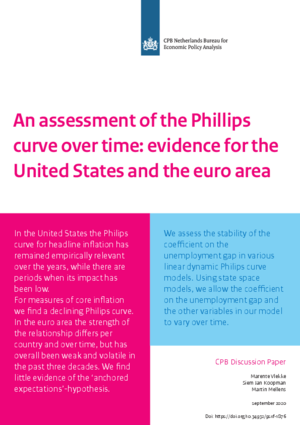An assessment of the Phillips curve over time: evidence for the United States and the euro area
Our main conclusion is that in the United States the Phillips curve for headline inflation has remained empirically relevant over the years while there are periods when its impact has been low. For measures of core inflation we find a declining Phillips curve. In the euro area the strength of the relationship differs per country and over time, but has overall been weak and volatile in the past three decades. For both the United States and the euro area countries, we find little evidence of the “anchored expectations"-hypothesis.
Downloads
We schatten de modellen voor de Verenigde Staten en de vijf grootste economieën in het eurogebied, waaronder Nederland.
We concluderen voor de Verenigde Staten dat de stabiliteit van de Phillipscurve afhangt van de maatstaf voor inflatie: voor de totale (‘headline’) inflatie is de relatie soms sterker, soms zwakker, voor kerninflatie is de relatie over de tijd heen verzwakt. Voor de vijf landen in het eurogebied verschillen de resultaten, maar kunnen we stellen dat over het algemeen de Phillipscurve zwak is en sterk in waarde op en neer beweegt. Voor Nederland observeren we een patroon dat meer vergelijkbaar is met de Verenigde Staten: voor de kerninflatie zien we een zwakkere Phillipscurve dan voor de totale inflatie.
We testen ook de ‘anchored-expectations’-hypothese, die stelt dat de Phillipscurve verzwakt is doordat de inflatieverwachtingen van het publiek en markten verankerd zijn op de inflatiedoelstelling van de centrale bank. Op basis van onze empirische analyse vinden wij echter geen bewijs voor de verankering van verwachtingen.
Authors


